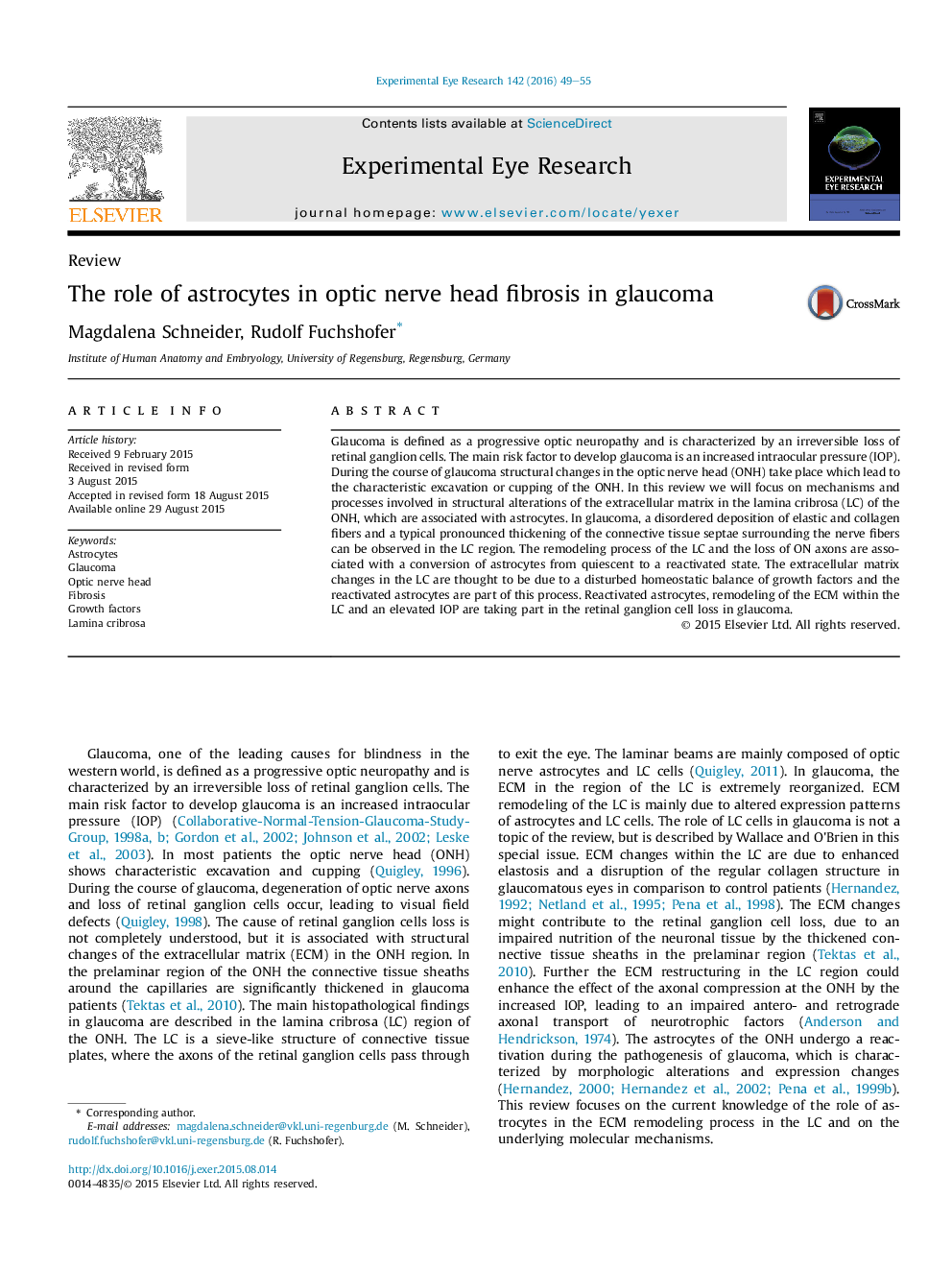| Article ID | Journal | Published Year | Pages | File Type |
|---|---|---|---|---|
| 4011113 | Experimental Eye Research | 2016 | 7 Pages |
•The structural ONH alterations are found at the lamina cribrosa in glaucoma.•In glaucoma, disordered depositions of elastic and collagen fibers are observed.•Astrocytes are reactivated in advanced glaucoma.•Glaucomatous ECM changes are related to reactivated astrocytes in the LC region.•ECM changes might be due to a disturbed homeostatic balance of growth factors.
Glaucoma is defined as a progressive optic neuropathy and is characterized by an irreversible loss of retinal ganglion cells. The main risk factor to develop glaucoma is an increased intraocular pressure (IOP). During the course of glaucoma structural changes in the optic nerve head (ONH) take place which lead to the characteristic excavation or cupping of the ONH. In this review we will focus on mechanisms and processes involved in structural alterations of the extracellular matrix in the lamina cribrosa (LC) of the ONH, which are associated with astrocytes. In glaucoma, a disordered deposition of elastic and collagen fibers and a typical pronounced thickening of the connective tissue septae surrounding the nerve fibers can be observed in the LC region. The remodeling process of the LC and the loss of ON axons are associated with a conversion of astrocytes from quiescent to a reactivated state. The extracellular matrix changes in the LC are thought to be due to a disturbed homeostatic balance of growth factors and the reactivated astrocytes are part of this process. Reactivated astrocytes, remodeling of the ECM within the LC and an elevated IOP are taking part in the retinal ganglion cell loss in glaucoma.
